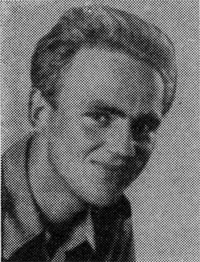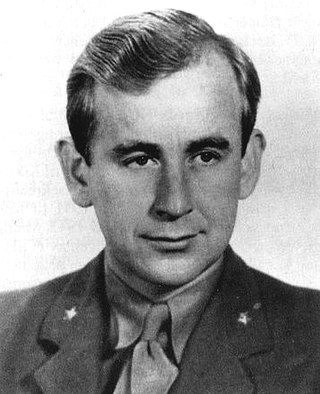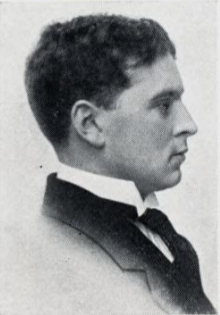Related Research Articles

Gunnar Fridtjof Thurmann Sønsteby DSO was a member of the Norwegian resistance movement during the German occupation of Norway in World War II. Known by the nickname "Kjakan" and as "Agent No. 24", he was the most highly decorated citizen in Norway, including being the only person to have been awarded the War Cross with three swords, Norway's highest military decoration.

Max Manus: Man of War is a 2008 Norwegian biographical war film based on the real events of the life of resistance fighter Max Manus. The story follows Manus from the Winter War against the Soviet Union, through the outbreak of World War II and the occupation of Norway by Nazi Germany until peacetime in 1945. The film is based on Max Manus's own books Det vil helst gå godt and Det blir alvor, as well as other accounts and historical documentation. The film stays largely historically accurate, but omits some events, and moves some of the supporting characters around to show them taking part in events in place of others. The production included around 1,800 extras and 2,000 workers behind the cameras.
Johannes Sigfred Andersen was a Norwegian resistance fighter during the Second World War, a member of the Norwegian Independent Company 1 (NOR.I.C.1). He was nicknamed "Gulosten"; 'The Yellow Cheese'. He also used the surname Ostein during the war. Andersen was a controversial character, because of his pre-war life as a well-known career criminal and a series of incidents that occurred during the war years. These incidents included Andersen working as an assassin during the war, and shortly after the war killing two German prisoners of war during a drinking binge. After the war, Andersen started a wood furniture business. He was supported financially by King Haakon VII of Norway, whose friendship he had gained during the war. Andersen was repeatedly accused of crimes after the war, and on one occasion convicted.

Gregers Winther Wulfsberg Gram was a Norwegian resistance fighter and saboteur. A corporal and later second lieutenant in the Norwegian Independent Company 1 during the Second World War, he was killed in 1944.
Fredrik Thorbjørn Kayser, was a Norwegian resistance member during World War II. He was especially noted for his role in the Norwegian heavy water sabotage, and has been referred to as "Western Norway's Gunnar Sønsteby".
Sigurd Bernhard Sverdrup was a Norwegian World War II resistance member.
RMO was a Norwegian clandestine organization for naval intelligence during World War II, led from Oslo. The organization operated from Spring 1942 until the end of the war in the spring of 1945.
Roy Nielsen was a Norwegian resistance member during World War II, a member of Milorg and involved in propaganda and sabotage. Among his sabotage operations was the destruction of 25 Messerschmitt fighter aircraft and 150 engines stored in a bus garage in Oslo, on 14 August 1944, together with Max Manus, Gunnar Sønsteby and others. Together with Max Manus he succeeded in sinking the German troop ship SS Donau in the Oslofjord 16 January 1945, by placing magnetic limpet mines with time delay on the ship's side.
Oslogjengen was a sabotage group operating in Oslo from May 1944 to May 1945, during the last year of the occupation of Norway by Nazi Germany. The group had its basis in both the British Special Operations Executive and the Norwegian Milorg, was coordinated by Gunnar Sønsteby, and had around ten members. It was the dominant sabotage group in Oslo between May and September 1944, when they performed a series of successful sabotage operations.

Norway's Resistance Museum also known as the Norwegian Home Front Museum is a museum located at the Akershus Fortress in Oslo.
Hjalmar Steenstrup was a Norwegian insurance agent, and Milorg pioneer and intelligence agent during World War II.
Operation Bittern was a military operation in occupied Norway planned and carried out in 1942 by the British Special Operations Executive (SOE) and the Norwegian government-in-exile in London.
"Vi vil oss et land" is a famous phrase in the context of Norwegian nationalism, derived from a poem by Per Sivle. It has been evoked by many different groups, including during the occupation of Norway by Nazi Germany, when an arrest order was issued on the deceased Sivle.
Operation Blumenpflücken was a counter-resistance operation in occupied Norway, planned and carried out by the Gestapo/Sicherheitspolizei in 1944 and early 1945.
Ida Nikoline "Tikken" Manus was a member of the Norwegian resistance during World War II.

Oliver Hansen Langeland was a Norwegian military officer and civil servant. He had careers in both civil service and the military, and is best known as leader of Milorg District 13 from 1942 to 1944.
Paal Frisvold was a Norwegian general, who was head of the Norwegian Army from 1961 to 1966.

Operation Mardonius was a military operation directed against German ships in occupied Norway, planned and carried out in 1943 by the British Special Operations Executive (SOE). The outcome of the operation was sinking of two ships in the harbour of Oslo, Ortelsburg of Hamburg and Tugela.
Eva Antonie Kløvstad, née Jørgensen was a Norwegian resistance member and Milorg leader from World War II.

Halfdan Haneborg Hansen OBE was a Norwegian military officer, Milorg pioneer and businessman.
References
- 1 2 3 4 5 "Arnfinn Moland 50 år 25. august" (in Norwegian). Norwegian News Agency. 3 August 2001.
- ↑ Entry Archived 2012-02-29 at the Wayback Machine for Prissubsider eller støtte? in BIBSYS
- ↑ "Norwegian all-time list, men's long jump" (in Norwegian). Norwegian Athletics. Archived from the original on February 5, 2008. Retrieved 1 April 2010.
- ↑ "Norwegian all-time list, men's triple jump" (in Norwegian). Norwegian Athletics. Archived from the original on June 3, 2008. Retrieved 1 April 2010.
- 1 2 List of publications Archived 2012-02-29 at the Wayback Machine in BIBSYS
- 1 2 Mikalsen, Espen H.; Aas Olsen, Trygve (25 November 2000). "NS-avkom i norske aviser". Dagbladet (in Norwegian). Retrieved 1 April 2010.
- ↑ Torp-Holte, Torill (2009). "Tikken versus Max". Prosa (in Norwegian). 15 (3). Archived from the original on 8 November 2010. Retrieved 1 April 2010.